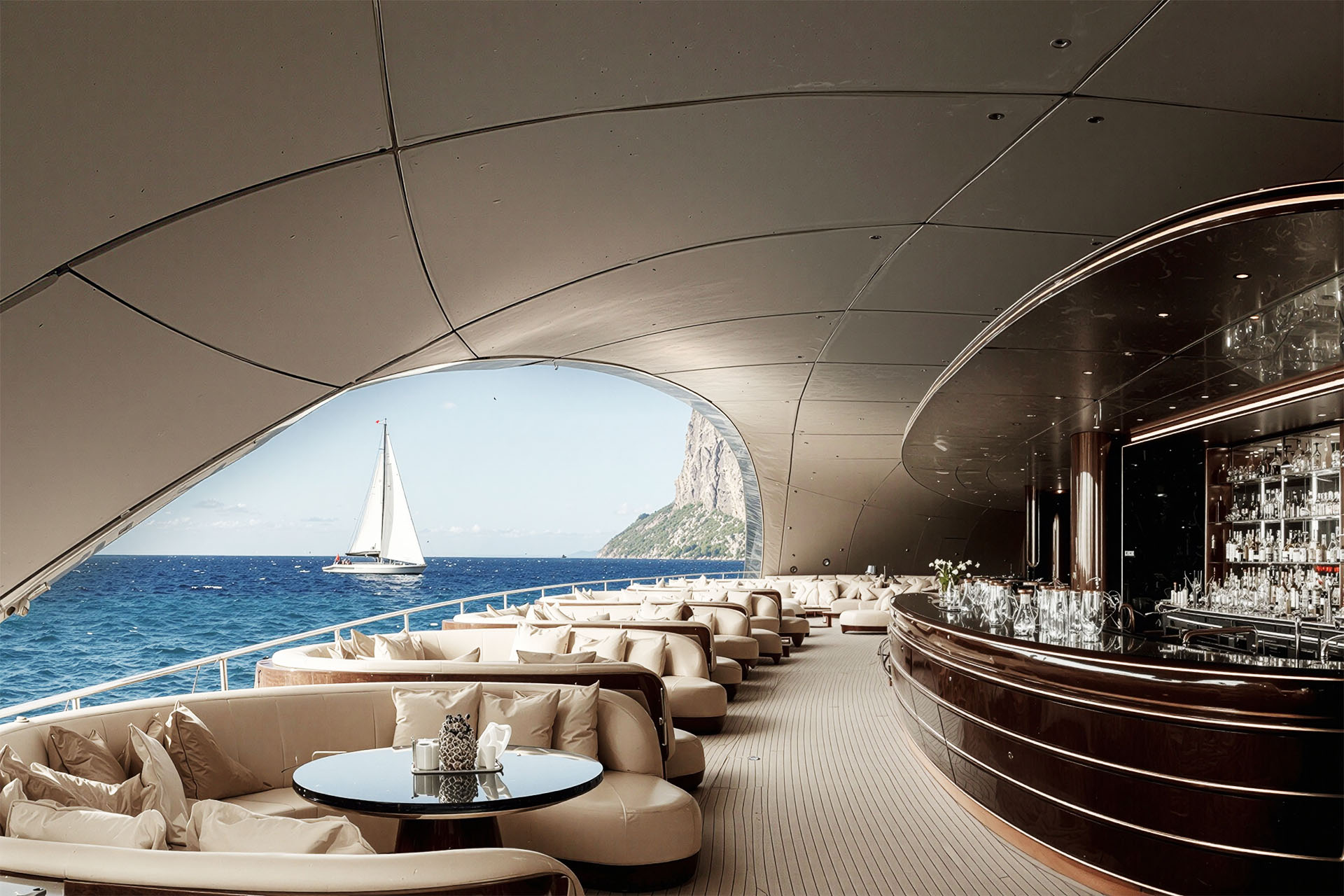In contemporary luxury, design has long ceased to be a matter of mere aesthetics. Today, it is narrative. It is layered identity, immersive experience, a transversal language. We are living through a design phase that might be called “neo-tailored”, where true style lies not in ornamentation, but in the ability to shape space around a unique, deeply personal way of living. It is a design that unites worlds once considered distant – yachting, high-end residential, next-generation hospitality – to create environments that mould themselves around gestures, habits, and desires.
In this context, the city itself can be read as a yacht at anchor, yet never static: a compact, refined, functional space, designed for movement even in stillness. A powerful metaphor, allowing us to observe the cross-pollination occurring between disciplines, materials, and design codes.
Hybrid Luxury, Behavioural Luxury
According to Bain & Company’s Luxury Industry Report 2024, the experiential luxury segment – including travel, wellness, hospitality and yachting – has seen an average annual growth of +14% over the past three years. For the first time, it has overtaken the tangible goods sector in terms of spending. But the most interesting data is qualitative: 86% of high-net-worth individuals (HNWIs) say they seek bespoke environments, where architecture, design, and technology blend to meet individual needs.
This drive for personalisation has dissolved the boundaries between previously rigidly separated worlds. Design studios now move fluidly between naval interiors, boutique hospitality, and tailor-made residential projects, creating inherently “hybrid” spaces. The yacht is no longer merely a means of transport, but a design model: a synthesis of complexity, functional beauty, and meticulous spatial management.
The Precision of Space, the Freedom of Gesture
On board a superyacht, every centimetre is designed. There is no waste, no excess. Here, luxury is measured in silence, potential space, transformability. Concepts that are also redefining urban architecture and cutting-edge interior design: less ostentation, more flexibility.
Thus, we see the emergence of environments that shift throughout the day: a living room becomes a workspace, a sleeping area disappears, a wall reveals storage or tech functions. This is a design language based not on form, but on behaviour: architecture as the silent choreography of everyday life.
This logic is particularly evident in high-end hospitality, where rooms are no longer “standard” but personal microcosms. The suite becomes an extension of the guest’s lifestyle: materials that react to light, integrated fragrances, intuitive smart systems, surfaces that respond to touch. Design is no longer decoration, but a mediation between comfort and multisensory perception.
Cross-Pollination: A Shared Grammar
What unites yachts, urban villas, and tailor-made hotels is not merely an aesthetic, but a shared grammar. Noble, high-performance materials—rare woods, brushed metals, unpolished tactile marbles – are treated like in an artisan’s workshop, often in dialogue with local traditions. But the spatial logic is changing too: spaces are no longer defined by function, but by the way they are lived.
Technical solutions become poetic: a cabin may be treated with the scenographic care of an art gallery; a corridor might contain storage, ambient lighting and airflow. Every surface is multifunctional, every element the result of a synthesis between aesthetics and engineering.
The result? Environments that speak multiple languages: the language of yachting, where compactness is a resource; the language of hospitality, where every detail tells a story; and the language of dwelling, where comfort is no longer defined by scale or quantity, but by coherence and adaptability.
Designing for Narratives, Not Typologies
The tailored approach is also a narrative one. Every project tells a unique story, built around the person who will inhabit it. It is no coincidence that today we speak of a “curatorial project”: no longer simply about layout or material choices, but about artistic direction of a lifestyle.
This gives rise to a new kind of designer: not a vertical specialist, but a transversal interpreter, capable of moving between disciplines, cultures, and production languages. A figure who collaborates with artisans, technologists, artists, shipyards, and hoteliers to craft spaces that are, above all, experiences.
From this perspective, architecture is no longer a container, but a device: a responsive system, attuned to its context. Like a yacht that appears still but hides beneath the surface a sophisticated engineering of movement, so too can the city – when designed with such sensitivity – become a stage for invisible yet profound transformations.
The fusion of yachting, residential and hospitality design is not an aesthetic trend, but a paradigm shift. A return to the centrality of the human being, of needs in motion, of private rituals. In this context, luxury means precision, silence, reclaimed time and space. And every project, however solid like stone, must contain within it the possibility of the sea.

